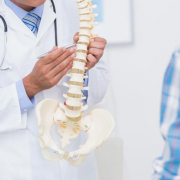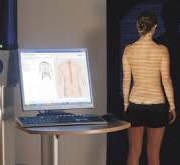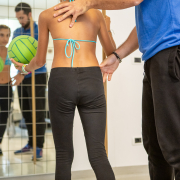Interrater reliability of three-dimensional reconstruction of the spine : Low-dose stereoradiography for evaluating bracing in adolescent idiopathic scoliosis
Every year, the Italian Scoliosis Study Group selects the best published papers on conservative spine treatment from the global scientific literature.
Here is the abstract from one of these papers.
Interrater reliability of three-dimensional reconstruction of the spine : Low-dose stereoradiography for evaluating bracing in adolescent idiopathic scoliosis.
Almansour H1, Pepke W1, Rehm J2, Bruckner T3, Spira D2, Akbar M4
Orthopade. 2020 Apr;49(4):350-358. doi: 10.1007/s00132-019-03712-x.
BACKGROUND
Bracing constitutes the mainstay treatment for mild scoliosis. The 3D reconstruction of the spine using low-dose stereoradiographic imaging (LSI) is increasingly being used to determine the true shape of the deformity and to assess the success of bracing.
OBJECTIVE
The aim of the study was to validate the measurement of 3D spinopelvic parameters and vertebral rotation in the setting of bracing treatment via a reliability study conducted in adherence to the guidelines for reporting reliability and agreement studies (GRRAS).
MATERIAL AND METHODS
Full spine stereoradiographs of patients with adolescent idiopathic scoliosis (AIS) who underwent Chêneau bracing were retrospectively analyzed. The 3D reconstruction was performed by two experienced operators in a blinded manner and randomized order. Rotation of every vertebra was computed in the coronal, sagittal and axial planes. Sagittal spinopelvic parameters were evaluated. All measurements were statistically compared to determine agreement of the measurement of brace correction using the intraclass correlation coefficient (ICC).
RESULTS
In this study, 45 patients (81% females) aged 12.5 ± 2 years were included. The mean absolute difference was less than 3.5° for all measured angles, less than 4 mm for sagittal vertical axis (SVA) and less than 1.5 mm for lateral pelvic shift. The ICC was high for all parameters (ICC >0.81). Despite the overall high reliability, the reliability of axial rotation was lower in the upper and middle thoracic spine and the lower lumbar spine.
CONCLUSION
Brace wearing during full spine LSI acquisition does not affect spinal measurements. The LSI under bracing treatment produces reliable measurements of spinopelvic parameters as well as vertebral rotation. These reproducible 3D data enable spine surgeons to assess the true shape of the deformity, to quantify rotation of each vertebra and enhance the understanding of the efficacy of bracing treatment.








Leave a Reply
Want to join the discussion?Feel free to contribute!